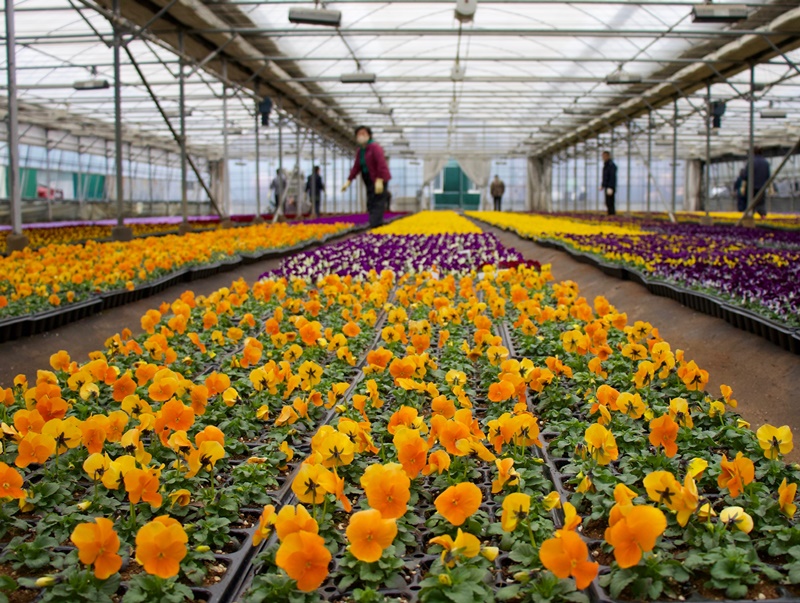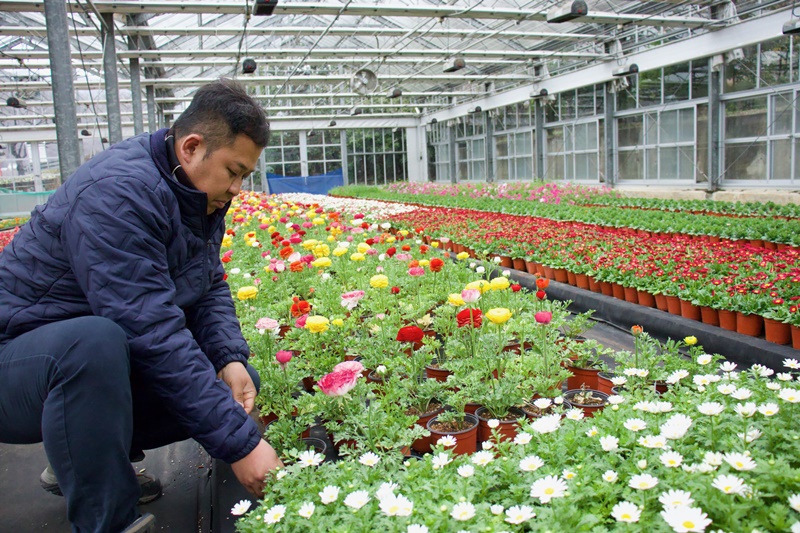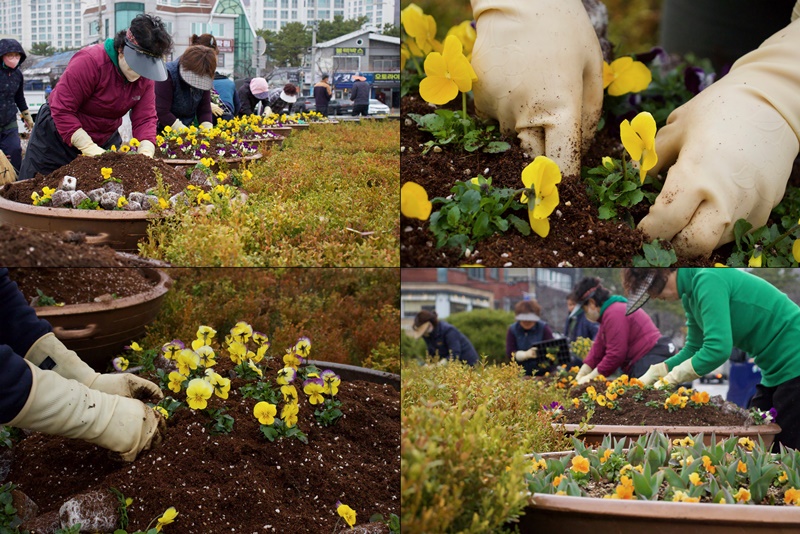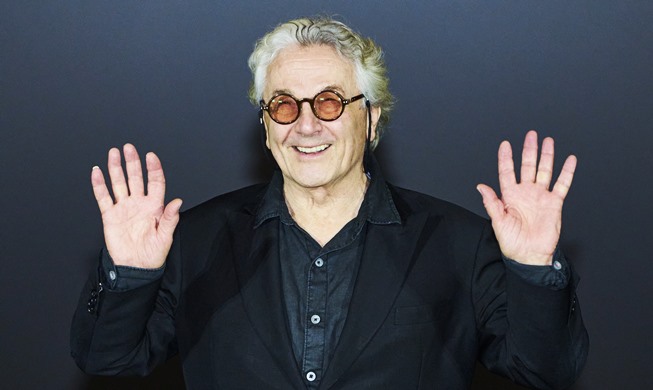-
 Korea.net's 24-hour YouTube channel
Korea.net's 24-hour YouTube channel- NEWS FOCUS
- ABOUT KOREA
- EVENTS
- RESOURCES
- GOVERNMENT
- ABOUT US

This is the greenhouse of the plant nursery at Agricultural Technology Center of Changwon, Gyeongsangnam-do Province.
By Wu Jinhua
Photos = Wu Jinhua
"It's rewarding to see people enjoy the flowers that we meticulously cultivated."
A Korea.net staff writer on March 5 visited the Jinhae-gu District plant nursery at Agricultural Technology Center of Changwon, Gyeongsangnam-do Province, three weeks before the opening of the Jinhae Gunhangje (Cherry Blossom) Festival, the largest event of its kind in the country.
That day saw drizzling rain on Gyeongchip, the second of the nation's 24 solar terms under the lunar calendar when frogs wake up from hibernation. When the writer arrived at the center, the staff there were sorting the flowers to load on trucks for delivery to other cities.
Workers carried in both hands rectangular flowerpots with seedlings in them. Flowers in the nursery were watered right before shipping, coming in a variety of shapes and colors after having grown in winter and ready to bloom in cities in spring.
Flowering planting in the city usually begins between late February and early March. The process involves moving grown flowers to designated locations for replanting.
The nursery saw its busiest period as the festival will start on March 23. Flower planting there occurs four to six times a year and is busiest in spring and fall, two seasons with many festivals and events.
Spring is the busiest "farming" time of the year.

A worker on March 5 checks flowers at a greenhouse in the plant nursery of Jinhae-gu District in Changwon, Gyeongsangnam-do Province.
Flowers are extra sensitive to temperature changes and thus need constant care. In addition to preparation for the festival, staff must walk around the city to check flowers to brace for sudden cold weather or temperature volatility. Checking the condition of flowers at the plant nursery is an important task.
The types of flowers planted differ by season due to factors like seasonality and temperature. Leading examples include chrysanthemums and pansies with impressive yellow buds planted in spring, red begonias and petunias in summer, seasonal chrysanthemums in fall, and cold-resistant cauliflowers in winter.
Spring flowers were planted that day at Bukwon Rotary near Yeojwacheon Stream, a famous cherry blossom spot in the area that is the main venue and birthplace of the festival with a statue of Admiral Yi Sun-sin.

Workers on March 5 plant flowers at Bukwon Rotary in Jinhae-gu District of Chagwon, Gyeongsangnam-do Province.
As soon as the workers arrived in the city, they quickly turned over the soil in the flower beds. They moved the flowers to near the flower beds and began planting, with their delicate but busy hands soon filling the beds with beautiful flowers.
They completed the planting process by unhooking hoses from water trucks and watering the flowers. The flower planted that day was the viola, which is resistant to cold weather and part of the pansy family.
The violas came in six colors and were arranged in order around the statue.
Kim Duk-sik, head of the urban flower team at the center, began as a rural instructor and has supervised Jinhae-gu's urban landscape for 25 years, including the festival.
"Growing flowers is a task requiring much unseen effort from planting the seeds to watching flowers bloom," he said. "Cherry blossoms gently fluttering overhead are nice, but seeing the beautiful flowers planted beneath around your feet is another great way to enjoy the Jinhae Gunhangje Festival."
Now in its 62nd year, the festival will run from March 23 to April 1 featuring cultural events at Bukwon and Jungwon rotaries, Yeojwacheon Stream and Gyeonghwa Station Park featuring cultural events.
jane0614@korea.kr
Most popular
- First hearing-impaired K-pop act hopes for 'barrier-free world'
- 'Mad Max' director impressed by 'cinema-literate' Korean viewers
- Romanian presidential couple visits national cemetery
- President Yoon, Japan PM pledge better trilateral ties with US
- President, Romania pledge better defense, nuclear power ties













